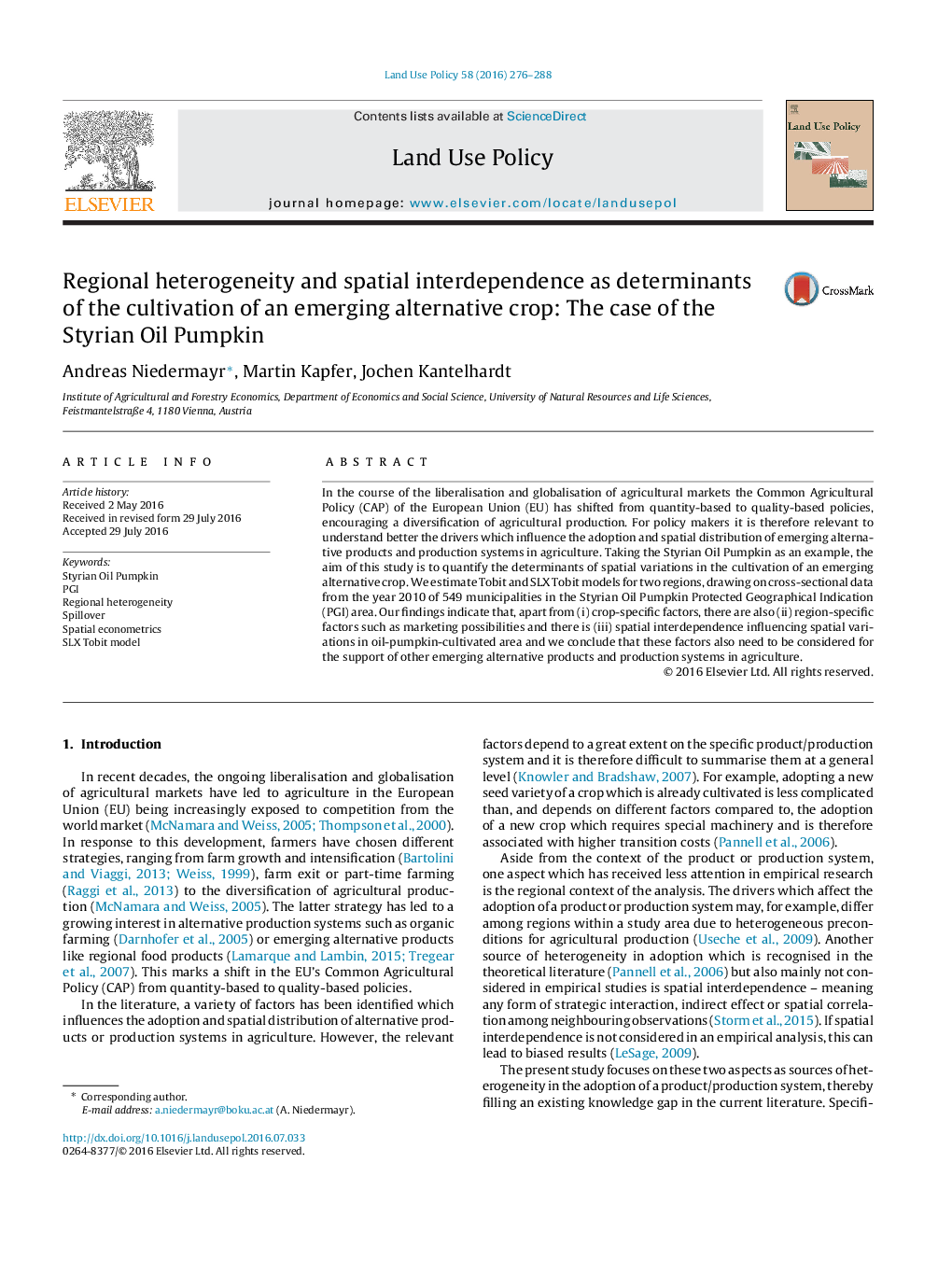| Article ID | Journal | Published Year | Pages | File Type |
|---|---|---|---|---|
| 6546890 | Land Use Policy | 2016 | 13 Pages |
Abstract
In the course of the liberalisation and globalisation of agricultural markets the Common Agricultural Policy (CAP) of the European Union (EU) has shifted from quantity-based to quality-based policies, encouraging a diversification of agricultural production. For policy makers it is therefore relevant to understand better the drivers which influence the adoption and spatial distribution of emerging alternative products and production systems in agriculture. Taking the Styrian Oil Pumpkin as an example, the aim of this study is to quantify the determinants of spatial variations in the cultivation of an emerging alternative crop. We estimate Tobit and SLX Tobit models for two regions, drawing on cross-sectional data from the year 2010 of 549 municipalities in the Styrian Oil Pumpkin Protected Geographical Indication (PGI) area. Our findings indicate that, apart from (i) crop-specific factors, there are also (ii) region-specific factors such as marketing possibilities and there is (iii) spatial interdependence influencing spatial variations in oil-pumpkin-cultivated area and we conclude that these factors also need to be considered for the support of other emerging alternative products and production systems in agriculture.
Related Topics
Life Sciences
Agricultural and Biological Sciences
Forestry
Authors
Andreas Niedermayr, Martin Kapfer, Jochen Kantelhardt,
